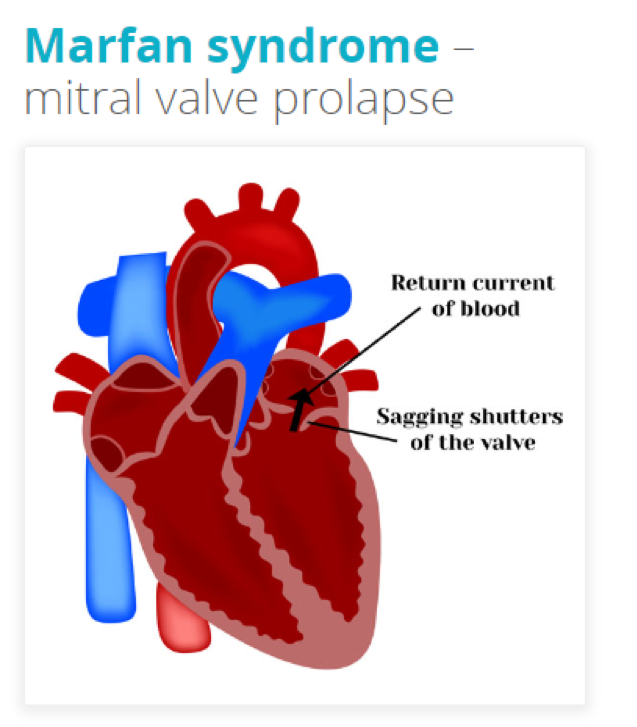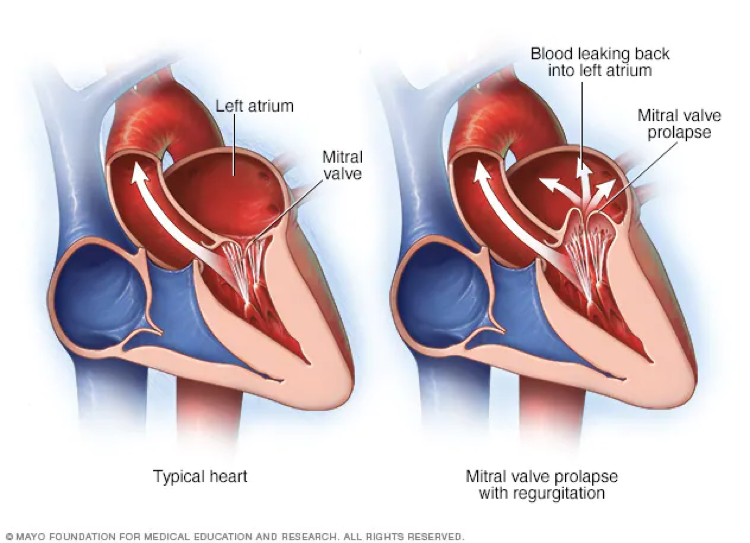Following a strict one-way system, blood flows around the heart and body in a single direction, facilitated by handy valves. But in Marfan syndrome it can go literally backwards. Today’s Friday Fact clarifies a commonly experienced Marfan phenomenon, mitral valve regurgitation.

There are four valves that control the flow of blood through the heart. Normally the blood always moves forward in one direction from the upper chamber to the lower chamber . If the blood moves backwards ie from the lower to the upper chamber this is a leak called regurgitation.
In Marfan syndrome, the most common problem we see is mitral valve prolapse which can lead to leaking of the valve known as regurgitation.
The mitral valve is found on the left side of the heart and sits between the left atrium (upper chamber receiving oxygenated red blood from the lungs) and the left ventricle (lower chamber that pumps the oxygenated red blood around the body via the aorta).
What is mitral valve prolapse? Often known as floppy mitral valve.
Weakened connective tissue found in Marfan syndrome can affect the mitral valve and this causes the two leaflets of the valve to billow or parachute upwards into the upper chamber (left atrium) instead of staying at the same level whilst the heart beats. This is one of the things your cardiologist will be keeping an eye on during your routine echocardiogram.
If a diagnosis of Marfan syndrome is being considered this will be something your doctors are checking for.
What is mitral valve regurgitation (MVR)?
The weakened tissue of the mitral valve can mean that as well as parachuting upwards into the left atrium, the valve leaflets can stop closing together properly, allowing some blood to flow the wrong way, leaking from the left lower pumping chamber (the left ventricle) back into the upper chamber rather than out into the aorta to the body.
If the MVR is mild your cardiologist will keep an eye on this with scans to ensure it does not change. If the MVR becomes more severe, with more blood flowing the wrong way, the heart must work harder to pump sufficient oxygenated blood around the body and the upper chamber of the heart can become dilated due to increased pressure. Overtime, without treatment this can cause heart failure. Usually if the leak is mild it is just monitored. If it increases the first line of treatment is medication.
Surgery may be indicated to fix the problem if the leak is severe . Sometimes the mitral valve can be repaired, sometimes it needs to be replaced with a mechanical valve.

Signs and Symptoms
- Irregular heartbeat
- Shortness of breath
- Swollen feet or ankles
- Heart murmur (that can be heard by your doctor when listening to your heartbeat)
- Failure to gain weight and grow in a child
Echocardiograms (ultrasound scans of the heart) are used to check on the structure and function of the valves in the heart and are an excellent tool to monitor changes in the valves over time. These are an important part of surveillance for Marfan syndrome.
[The above picture from Mayo Clinic demonstrates the back flow]









